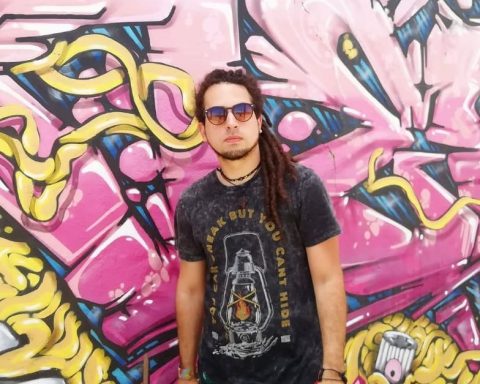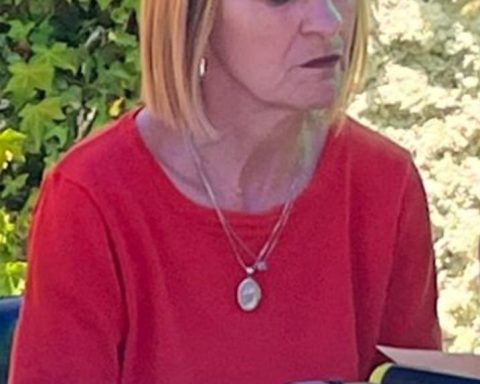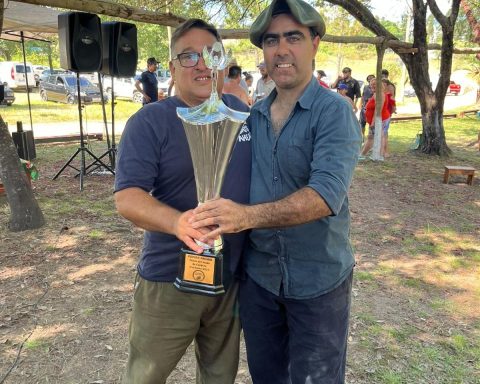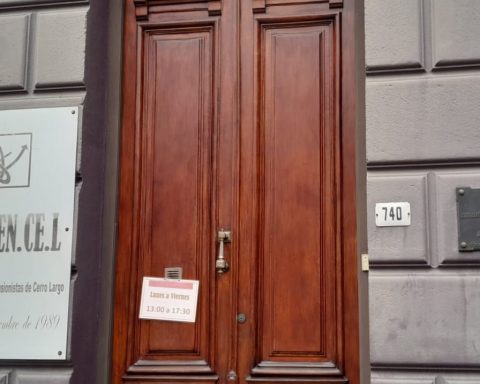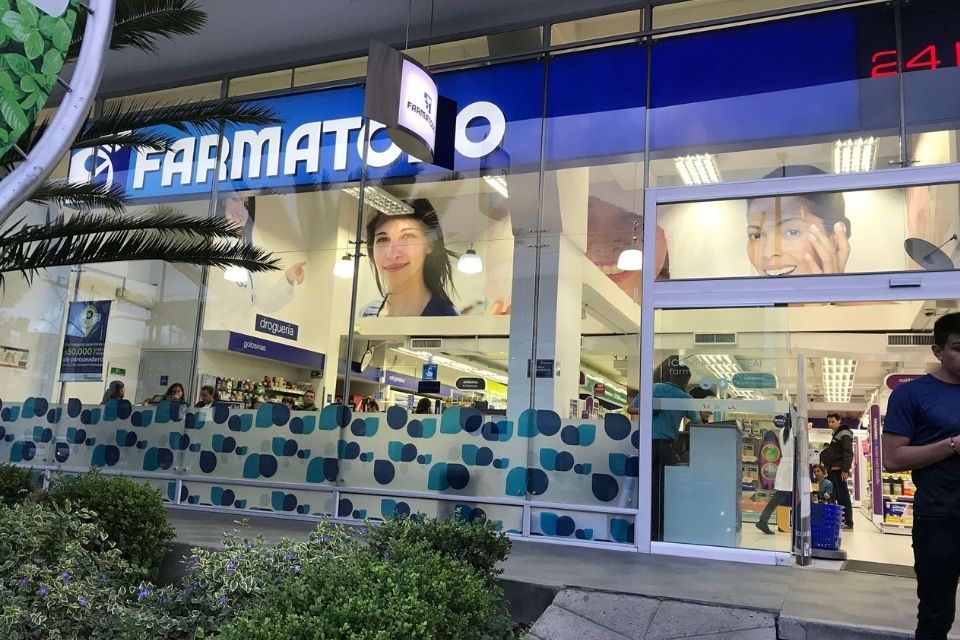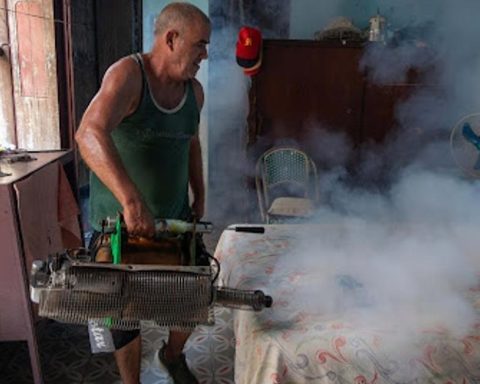Through tears, the policeman, before whom he would define his future, said: “I defended myself. We are 24-hour police officers. I defended myself —cries— When I see that the man falls, I see that he keeps pointing at me and that’s why I continue to defend myself. And well, And when I manage to defend myself, I’m not going to continue hurting him, I’m even going to assist him, I call the emergency, I stop a car that was passing by and well, that… I don’t feel happy about what happened, I didn’t want to kill anyone.” . A couple of months after that, he found out that Judge Marcelo Malvar had sentenced him to two years and eight months in prison for murder as an eventual intent, but he did not grant the prosecutor’s request, which asked for seven years, as and as reported The Observer Thursday.
“We are 24-hour police officers” was a phrase that was repeated a lot during his statement by the then deputy executive director of the National Police, Jorge Berriel. “They are asked that when they go alone, they are on alert. Because the Police have to be a 24-hour police officer. They have to be alert for that and also because they are a source, that crime in this country uses them, unfortunately… .”, said the then hierarch before being interrupted by one of the prosecutors.
In this case, the police officer—who was dressed in civilian clothes—had fired eight shots at whoever tried to kidnap him. In Malvar’s opinion, the first six were in legitimate defense, but the other two were excessive.
But from the statements of Berriel and the then director of the Police School, Efraín Abreu (who today holds the position that belonged to Berriel, who was fired after his charges in the Astesiano case) it can be deduced that the directives of the Ministry of the Interior are to seek eliminate the threatalthough both stressed that the ideal would be not to use the firearm for that.
When it is understood that it is necessary to shoot, the indication of the School is to shoot “from the waist up, to the shoulders and head” because there are “all the organs that can incapacitate a person”, according to the statement. of Abreu. In turn, the judge in the case said that “the police do not teach to shoot at the legs or the hands, but at the torso or the head and although nobody wants the attacker to die, it is almost inevitable with the techniques that are teach, which are obviously designed to preserve the life of the inhabitants and of the officials themselves”.
But the former director of the Human Rights Institute and former undersecretary of the Ministry of the Interior (2005 to 2007), Juan Faroppa, questioned this statement in dialogue with The Observer. “Sometimes they say that you shouldn’t shoot up, or at certain areas of the body, and that you have to shoot down. But if you shoot a leg and hit the femoral artery, that person bleeds out quickly. So, the question is not where to shoot? but is it necessary to shoot?“said the adjunct professor of the Chair of Human Rights of the Faculty of Law.
In that sense, he wondered if whenever it is shot, there really was no other way to eliminate the threat. “The Uruguayan Police, like many in the world, still has macho remnants in reference to courage and daring. What problem is there that if the policeman sees that he is in a complicated situation, withdraw? Seek reinforcements, seek to have tactical superiority and then intervene in another way”, he valued. Despite this, he insisted that he understands that there are situations in which shooting is the only possible way to avoid a greater evil, such as death or personal injury Or that of a hostage.
In fact, he recalled that when he worked at the United Nations, an FBI agent said that when he drew his weapon, he pointed at the attacker’s testicles, chest, or head. He understood that when he drew the gun, it was because he really there was nothing else to do than delete target. He only did it when he had the firm conviction that if he didn’t neutralize the target, they were going to kill him.
In the case in question, the policeman had crossed the path and tried to get on a bus to avoid meeting the robber. But finally, when the victim pointed a toy gun at him from a distance, the policeman started shooting.
The police procedure law, in its article 18, states that the use of weapons and violence “It must be moderate, rational, progressive and proportional, considering the risk to be faced and the legitimate objective to be pursued.“. In article 23, literal C, it indicates that the police has the duty to reduce “to a minimum the damages and injuries that could be caused to the aggressor, as long as this does not put his life or physical integrity or those of third parties at risk”.
To choose when to shoot, Faroppa understands, the most important thing is professionalization to be able to decide in the best way in a moment of great stress. “To solve that moment, the police officer has to be prepared as a doctor, a paramedic or a nurse is prepared when he is going to carry out an intervention. That it be urgent and last. That he knows that if he cuts badly or if he connects a wrong line, it can end with the other person’s life. But that it must be done reflexively, because there is no time to think. There is no time to reflect. It is something that is generated with training and training. Fundamentally hands-on training,” she said.
Gaps in training
Abreu, Berriel and the president of the police union, Patricia Rodríguez, also repeated the same thing: “At that moment you have to be there… it’s a second.” So, in dialogue with The Observer, The trade unionist asked to consider that the official at that moment, under a lot of stress, must quickly decide what action to take and she can define her future.
Judge Malvar, who finally ended up condemning the defendant, indicated that initially he had acted in accordance with the teachings of the academy and that any discrepancies with them are not attributable and “much less when they come from unsuitable people such as judicial operators.”
Faroppa disagrees. In fact, she exchanged on the point with a policeman when he was giving a course for troops in another country. When the ex-hierarch talked about the importance of preserving human rights, the policeman told him: “It’s very easy for you to talk, it’s there, on your desk, Those of us who are there receiving shots and seeing our comrades being killed are us”.My answer was that if he was not good for that, he had to dedicate himself to something else, because a surgeon intervenes on a child who is bleeding to death and dies in the operating room, he is not going to tell the parents ‘ah, but you have to be there eh, there is a lot of blood, it’s tremendous!'”, he said.
But to the discussion about when it is ethically correct to shoot, add that officials do not always know when it is legal. I defended myself, the officer said through tears when, in Malvar’s opinion, he had committed a homicide. The president of the union, Rodríguez, told The Observer that a Training Secretariat was formed in the union because they perceived that “there were complicated shortcomings when it came to acting”.
They noticed it because in the criminal interventions they had —lawyers from the union sponsor most of their members who must appear before Justice— they realized that the justifications given by the police officers for their actions “it did not have much to do with legal reality” but they were referring to “hallway voices”. The rules were not clear.
“If you leave (from school) and you have to share with a police officer who is not very clear about it either and is older than you, you are going to pay attention to what he tells you even though it may not be right. There was structural shortcomings,” said Rodríguez. He exemplified that when in the heat of the debate over the Urgent Consideration Law (LUC) videos of police officers in proceedings went viral, many of them believed that it was illegal for people to film them and that they could confiscate their device for that reason. “It wasn’t that the policeman was bad, it was that he didn’t really know if the person could do it or not”he explained. After that, the union gave some talks about it and thanks to that and word of mouth, it stopped happening.
For this reason, Rodríguez demanded more and better training: “Historically it was said that the policeman was made in the street with the experience of the oldest. But that can not be taken into accountBecause as crime changes, drug gangs. It’s not the same, because a policeman who just got out of school today can face any event of this nature and no one is going to ask him if he has a day or 10 as a policeman.”
In the trial, Berriel declared that it is the responsibility of superiors to keep the troops updated in the knowledge and that the increasing violence of the criminals forces them to act quickly.
“The police profession is very serious. That is one of the problems we have, that we think that we should always put more people on the streets because society demands more police and we are taking people without any training. Not everyone is psychologically or educationally qualified to be a police officer. But Since the political system of all the parties responds to the popular clamor, which calls for more police officers, it becomes a sausage-making machine. responsibility is politicalFaroppa mused.
The Observer he tried to get in touch with hierarchies of the Police School, without success.
Police robberies and legitimate defense
The defendant’s defense – led by Joaquín Abal and Emiliano Chimuris – argued that it was a case of legitimate defense. That the police officer had to define what to do in nine seconds and that in his eyes, whenever he fired, the man represented a threat to his own life.
Homicide prosecutor Carlos Negro told The Observer that for a homicide to constitute legitimate defense “the jurisprudence says that the situation has to be very clear” and depending on that, the cases are archived or not. In almost two years in charge of that prosecutor’s office, he tried between six and eight cases and all of them were configured as legitimate defense. Those who had fired had done so to defend themselves. Some of them had been derived from robbery and in one case, for a robbery, in which he shot himself to the ground as a deterrent but the bullet ricocheted and ended up killing the other person.
Adriana Edelman, for her part, indicated that since she was in charge of her shift -the third-, June 2020, she had at least 12 or 14 cases in which she had to analyze whether the police officer had committed a homicide or had acted in legitimate defense
In turn, the defense put the magnifying glass on how robberies affect the police community. For this reason, they reported that between January 1 and February 5, 2020 (the date of the event) there were 77 police officers victims of an intentional crime (homicides, robberies, thefts and attacks). Ten of them had their regulation weapons stolen and 93% of them were not in uniform.
On this point, Patricia Rodríguez affirmed: “There was a very big peak in the last stage of the previous government and we had many compañeros killed because of that fact because sometimes they doubted if they could defend themselves or not, if they could shoot or not before certain events. I think that was settled and today the policeman is going to defend himself. He is a person who does not have to give his life away, beyond having chosen to be a policeman.”
In addition, he believes that the argument that the Uruguayan police generate “fear” or “terror” falls under its own weight. “You watch videos of procedures and people come up to them, they don’t let them do the procedure, it’s okay to film, what’s not okay is to get in the way. They want to get the detainees out…”, he said.
At the trial, Abreu declared that they had police officers who ended up being killed for “taking their trust” and not shooting anymore. “They are unique moments with a lot of stress, which, obviously and with the apologies of the case, we might not be here if there was not a deceased person, but at least I do not have to mourn the death of a police officer as has happened at other times. It is only a personal appreciation. If the aggressor still has the possibility of movement and is armed and the policeman does not have that situation under control, yes, the shots can be fired,” he said then.
